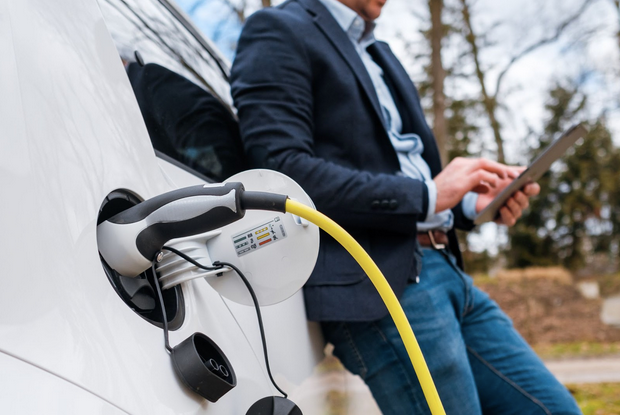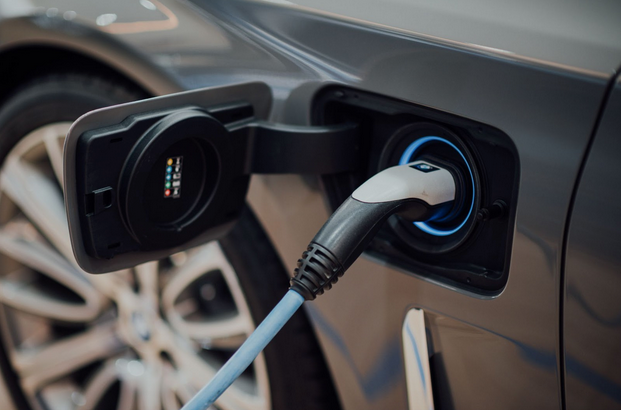
Electric vehicles (EVs) are becoming increasingly popular as more people recognize the benefits of reducing their carbon footprint and saving on fuel costs. However, with the growing number of EVs on the road, the demand for charging infrastructure has also increased.
There are currently three levels of EV Chargers available, each with its own unique capabilities and charging speeds. Understanding the differences between these three levels is crucial for EV owners and those considering purchasing this type of vehicle.
So, let’s explore the different levels of EV charging and cover everything you need to know about each one to ensure you can charge your car with ease.
The Growing Need for Accessible EV Infrastructure

As you probably know, EVs are an environmentally friendly transportation option, emitting zero tailpipe emissions, reducing overall carbon footprint, and posing serious competition to their gasoline-fueled rivals.
Additionally, they produce less noise pollution than traditional vehicles, making them an ideal choice for urban areas and contributing to a quieter and more livable city environment. As more people start to recognize the benefits of EVs and shift towards more sustainable lifestyles, the demand for infrastructure and charging options is increasingly growing.
The growing demand for EV infrastructure is a direct result of this shift. With the rise of EV ownership, drivers are looking for easy access to charging stations, particularly when on long trips. For example, hotels with charging stations are becoming increasingly popular, providing a convenient and accessible way to charge a car while staying overnight.
In addition to hotels and public charging stations, there are several other popular charging locations. Many workplaces and office buildings have started installing charging stations in their parking lots as a perk for employees.
Some shopping centers and malls also offer EV charging stations to attract eco-conscious shoppers. Additionally, many EV owners choose to install a charging station in their own homes, allowing them to conveniently charge their vehicles whenever they want.
But how does this charging infrastructure work? Basically, there are three levels of charging, ranging from level 1, which is the slowest, to level 3, which is the fastest. Each level requires different equipment and installation, and understanding the differences between them is crucial for taking proper care of your EV.
EV charging cables Australia power the nation's shift towards eco-friendly transportation.
Level 1 Charging

Level 1 charging is the slowest and most basic form of EV charging, and it involves plugging an electric vehicle into a standard 120-volt household outlet using the charging cable that comes with the vehicle. This method of charging typically provides a charging rate of 2-5 miles of range per hour, and it can take about 22-40 hours to charge a standard battery from empty to full.
In North America, Level 1 charging utilizes a standard 3-prong household plug on one end and an EV connector on the other, which is plugged into the vehicle's charging port. This charging level is widely available and requires no special equipment or installation beyond a standard household outlet.
However, in Europe, Level 1 charging is not in use due to the standard residential electricity voltage of 230 volts, which is incompatible with Level 1 charging.
Level 1 charging is often used as a backup or emergency option or for those who drive shorter distances and don't need to charge frequently. While it is the slowest and least powerful option, it is also the most accessible and affordable form of EV charging.
Level 2 Charging

Compared to Level 1, Level 2 charging is a much faster option, making it an attractive choice for those who need to charge their EVs more quickly. In North America, Level 2 chargers require a 208-240-volt outlet, while in Europe, they use a 230-volt single-phase outlet. Level 2 charging typically requires the installation of a dedicated charging station.
Level 2 chargers come with a range of connector types, with the J1772 connector used in North America and Japan and the Mennekes Type 2 Connector used in Europe. The charging capacity of Level 2 chargers varies by region, with North American Level 2 chargers topping out at 19.2 kW, while European Level 2 chargers can reach up to 22 kW.
The higher voltage allows Level 2 chargers to charge an EV much faster than a standard household outlet, providing a charging rate of 10-60 miles of range per hour, depending on the vehicle and charging station. Level 2 charging stations can be installed at home or in public locations such as parking garages, malls, and workplaces.
This charging level is an excellent option for those who need to charge their EVs frequently and quickly, and it's becoming increasingly common as the demand for EV infrastructure continues to grow.
Level 3 Charging

Level 3 charging, also known as DC fast charging, is the fastest and strongest form of EV charging, capable of providing a significant amount of power in a short amount of time. Level 3 chargers convert AC to DC within the charger and provide a charging rate of up to 350 miles of range per hour, depending on the vehicle and the charging station.
Level 3 charging stations require a three-phase power supply, with a 480-volt supply in North America and a 400-volt supply in Europe. These chargers are capable of outputting up to 360 kW of power, allowing them to fully charge an EV in under 20 minutes, depending on the vehicle's charge acceptance rate.
Due to the high voltage and current levels required for Level 3 charging, it's typically only available in commercial or public locations, such as rest areas, shopping centers, and highway rest stops. Level 3 charging stations often use the CHAdeMO or CCS connector types, with availability varying widely depending on the location and the region.
While Level 3 charging is the most expensive and least commonly available form of charging, it can be a convenient option for those who need to quickly charge their EVs on long-distance trips.
Explore the Science of EV Charging and Join the Automotive Revolution
For eco-conscious drivers, owning an EV is a no-brainer when it comes to reducing carbon emissions and dependence on fossil fuels. However, owning an EV also requires understanding how to charge it effectively.
We hope our guide helped you understand which level of charging you can access and how to use it effectively. By future-proofing yourself and staying informed about EV charging infrastructure, you can ensure your EV ownership experience is as convenient and stress-free as possible.
Our Style Guide



